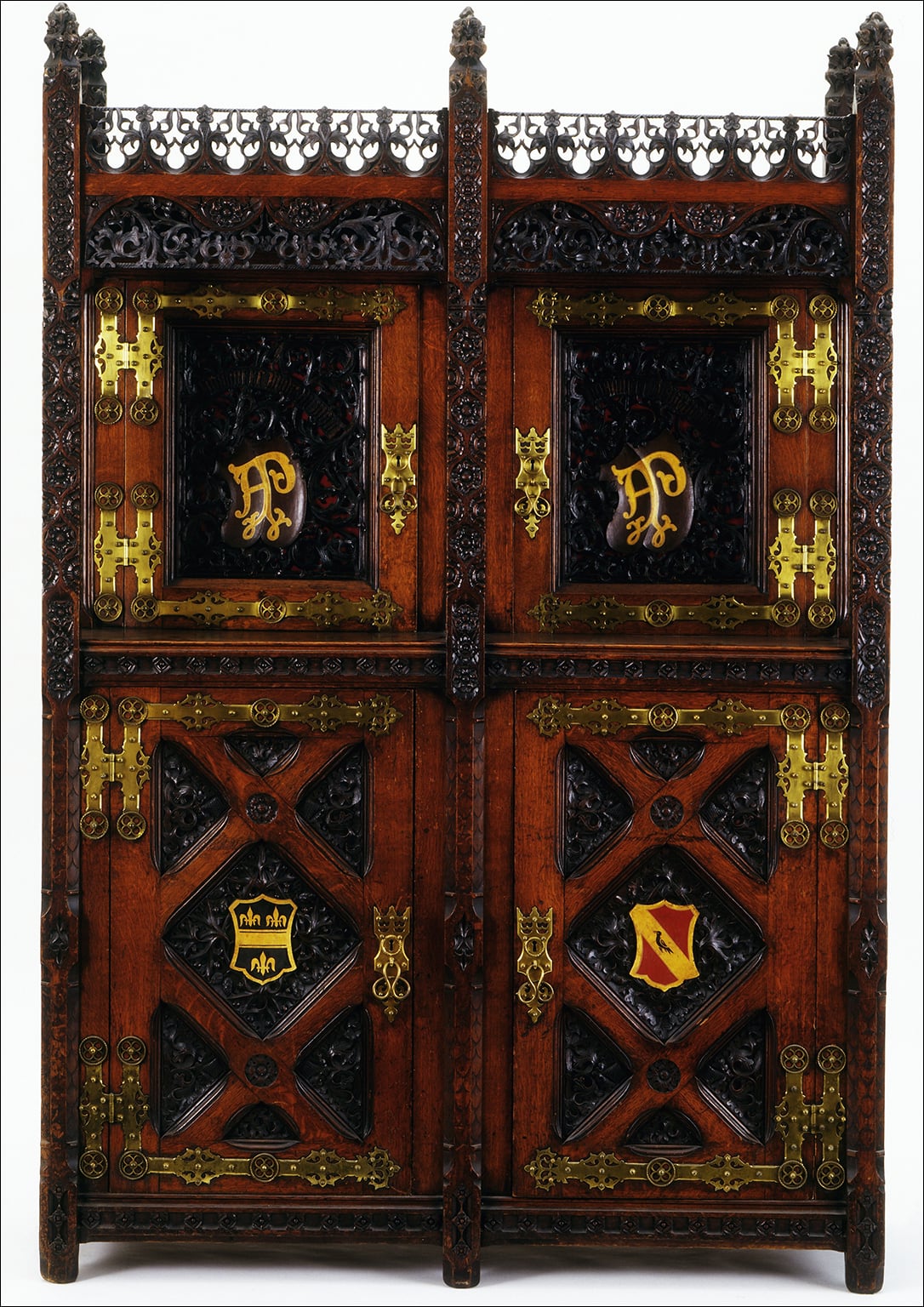Pugin Cabinet
A W N Pugin, John Hardman & Co, George Myers, c. 1846

Augustus Welby Northmore Pugin is celebrated as the leading exponent of the 19th-century Gothic Revival movement in Britain. Among his greatest achievements are the co-design (with the architect Charles Barry) of the Palace of Westminster in London, and his own house, the Grange, at Ramsgate, Kent, for which this oak cabinet was made. The Grange was constructed to Pugin’s designs by the builder George Myers between 1843 and 1844. Pugin created elaborate decorative schemes for the interiors, making the house one of the most important domestic buildings of the 19th century. This cabinet probably stood in the dining room, beneath the stencilled ceilings and opposite the ornately carved fireplace. It is painted and gilded with symbols of personal significance: Pugin’s monogram appears on the upper panels, while the lower panels are emblazoned with the arms of the Pugin and Welby families (his father was French, his mother a Welby of Lincolnshire). The motto ‘Manners maketh man’, carved into the upper doors, is an illustration of the moralising mottoes that frequently appear in Pugin’s work. Pugin studied and collected original Gothic furniture and the richly carved form of this cabinet is based on early-16th-century cupboards used for serving and storing food. Air holes pierced in the upper doors suggest it may have been used for the same purpose. The cabinet was probably made by Pugin’s regular collaborator George Myers, and the ornate brass hinges and escutcheons are by Hardman of Birmingham. It has been on loan to the V&A since 1991, and now ranks as the most significant item of domestic furniture designed by Pugin in the museum’s entire collection.
More information
Title of artwork, date
Pugin Cabinet, c. 1846
Date supported
2015
Medium and material
Oak, carved, painted and gilded
Dimensions
229.5 × 151.5 × 60.5cm
Grant
100000
Total cost
433520

Get a National Art Pass and explore V&A South Kensington
You'll see more art and your membership will help museums across the UK
National Art Pass offers available at V&A South Kensington
Art Funded by you FAQs
Contact us
If you have a question about a work of art in our archive, please contact the Programmes team. We’ll be happy to answer your enquiry.